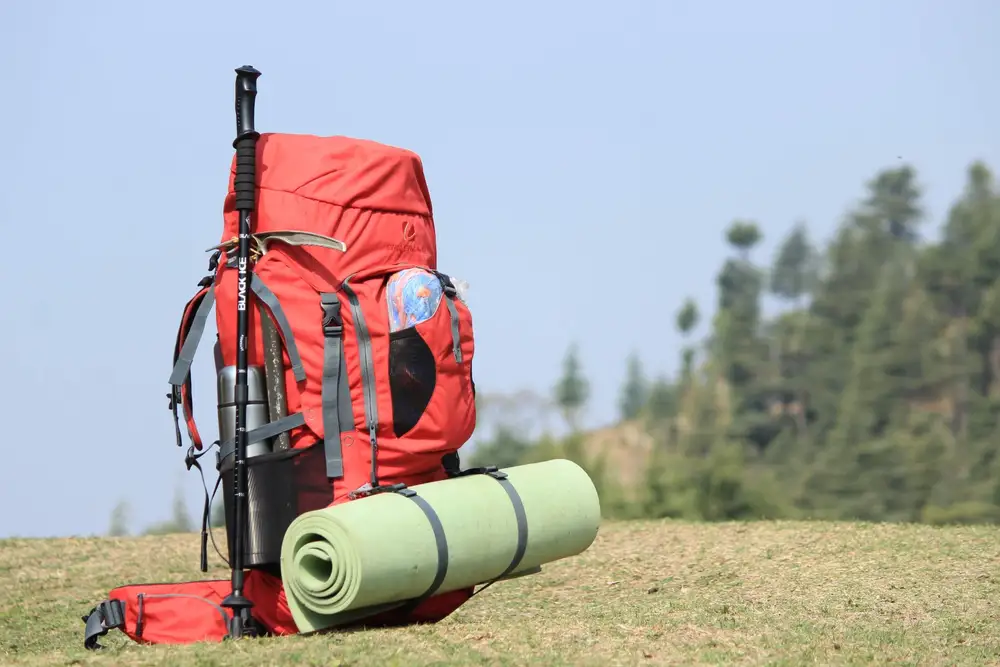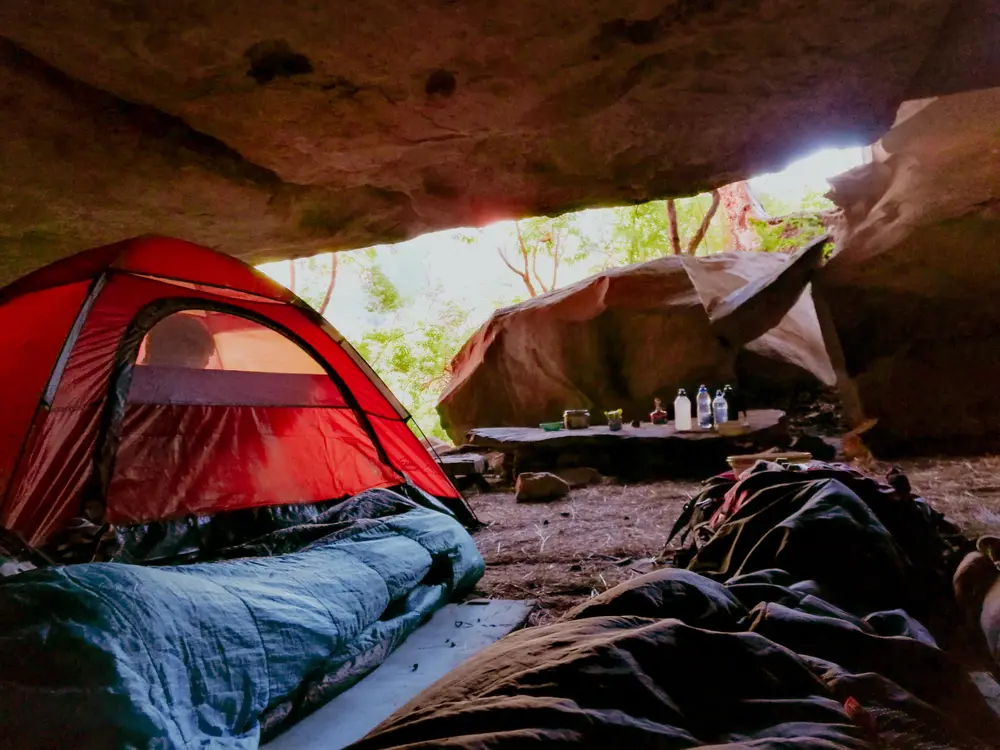| Key Takeaways |
|---|
| Long-distance hiking requires a backpack that is comfortable, durable, spacious, and versatile. |
| The best backpacks for long-distance hiking have features such as adjustable torso length, hip belt, and load lifters; multiple compartments and pockets; ventilation and hydration systems; and attachment points for gear. |
| Some of the top-rated backpacks for long-distance hiking are the Osprey Aether/Ariel, the Granite Gear Blaze 60, the Deuter Air Contact, and the Hyperlite Mountain Gear Southwest 3400. |
If you love exploring the outdoors and going on multi-day adventures, you need a backpack that can handle the demands of long-distance hiking. A good backpack should be able to carry all your essentials, such as clothing, food, water, shelter, and emergency items, while keeping you comfortable and balanced on the trail. It should also be durable enough to withstand harsh weather and terrain conditions, and versatile enough to adapt to different situations and preferences.
But how do you choose the best backpack for long-distance hiking? There are so many options available on the market, each with its own pros and cons. To help you narrow down your search, we have compiled a list of some of the most important features to look for in a backpack for long-distance hiking, as well as some of the best models that meet these criteria.
Features to Look for in a Backpack for Long-Distance Hiking
Size and Capacity
The size and capacity of your backpack depend largely on the length of your trip, the season, and your personal packing style. Generally speaking, you want a backpack that is big enough to fit all your gear, but not so big that it becomes cumbersome or tempting to overpack. A good rule of thumb is to aim for a pack that is between 30 and 80 liters in volume, depending on how many days you plan to hike and how much weight and bulk you are willing to carry.
For example, if you are going on a weekend trip (1-3 nights) in mild weather, you might be able to get away with a pack that is around 30-50 liters in volume. However, if you are going on a longer trip (5+ nights) in cold or wet weather, you might need a pack that is around 70 liters or more in volume. Of course, these are just rough estimates, and you should always test your pack before hitting the trail to make sure it fits everything you need.
Fit and Comfort
The fit and comfort of your backpack are crucial for long-distance hiking. You want a pack that fits your body well and distributes the weight evenly across your hips and shoulders. A poorly fitting pack can cause pain, fatigue, chafing, or even injury.
To ensure a good fit, you should look for a backpack that has an adjustable torso length or comes in different sizes based on your torso measurement. You should also look for a backpack that has an adjustable or interchangeable hip belt that wraps snugly around your waist. The hip belt should bear most of the weight of the pack, while the shoulder straps should provide stability and comfort.
Another feature that can improve the fit and comfort of your backpack is load lifters. These are straps that connect the top of the shoulder straps to the top of the pack. By tightening or loosening these straps, you can adjust the angle of the pack and bring it closer or farther from your back. This can help you balance the load and prevent it from sagging or pulling you backwards.
Organization and Accessibility
The organization and accessibility of your backpack determine how easy it is to find and access your gear. You want a pack that has multiple compartments and pockets that allow you to separate and categorize your items according to their frequency of use, size, shape, or function. For example, you might want a separate compartment for your sleeping bag or tent; side pockets for your water bottles or snacks; a top lid pocket for your maps or sunglasses; a front or back pocket for your rain jacket or first aid kit; and hip belt pockets for your phone or camera.
You should also consider how easy it is to open and close your pack. Some packs have a top-loading design, where you access the main compartment through a drawstring opening at the top. This can be more secure and water-resistant than other designs, but it can also make it harder to reach items at the bottom of the pack without unpacking everything. Other packs have a front-loading or clamshell design, where you access the main compartment through a zipper that runs along the front or side of the pack. This can be more convenient and user-friendly than other designs, but it can also compromise the structural integrity or water-resistance of the pack.
Ventilation and Hydration
The ventilation and hydration of your backpack affect how comfortable and hydrated you stay on the trail. You want a pack that allows air to circulate between your back and the pack to prevent overheating and sweating. You also want a pack that has a hydration system or is compatible with one to make it easier to drink water without stopping or reaching for a bottle.
Some packs have a suspended mesh back panel that creates a gap between your back and the pack. This can provide excellent ventilation and breathability, but it can also reduce the internal volume or stability of the pack. Other packs have a padded or molded back panel that conforms to your back and provides cushioning and support. This can be more comfortable and stable, but it can also trap heat and moisture.
Some packs have a built-in hydration reservoir or bladder that holds water and has a hose that you can drink from. This can be very convenient and efficient, but it can also add weight and bulk to the pack, and require more cleaning and maintenance. Other packs have a hydration sleeve or port that allows you to attach your own hydration reservoir or bladder. This can give you more flexibility and choice, but it can also take up space inside the pack or create leakage issues.
Attachment Points and Accessories
The attachment points and accessories of your backpack enhance its versatility and functionality. You want a pack that has enough attachment points to secure your extra gear, such as trekking poles, ice axes, sleeping pads, helmets, or crampons. You also want a pack that comes with or is compatible with useful accessories, such as rain covers, compression straps, sternum straps, or whistle buckles.
Attachment points can be loops, hooks, straps, or clips that are located on the outside of the pack. They allow you to attach gear that is too bulky, heavy, or dirty to fit inside the pack. However, they can also create clutter, noise, or snagging hazards if not used properly. Accessories are additional items that are included with or sold separately from the pack. They can improve the performance, protection, or convenience of the pack. However, they can also add weight, cost, or complexity to the pack if not needed.
Best Backpacks for Long-Distance Hiking
Based on the features discussed above, we have selected some of the best backpacks for long-distance hiking that are available on the market today. These backpacks have received high ratings and positive reviews from users and experts alike. They are also suitable for different types of hikers, budgets, and preferences.
| Backpack | Volume | Weight | Price | Pros | Cons |
|---|---|---|---|---|---|
| Osprey Aether Osprey Ariel | 55/65/85 L | 4.9-5.7 lbs | $290-$360 | Excellent comfort and support; customizable fit; removable top lid; multiple pockets and attachment points; integrated rain cover | Heavy; expensive; no ventilation |
| Granite Gear Blaze 60 | 60 L | 3 lbs | $270 | Lightweight; comfortable with heavy loads; adjustable torso length and hip belt; perfect pocket combination; durable construction | Tiny buckles hard to operate with gloves; no ventilation |
| Deuter Air Contact | 50+10/60+10/70+10 L | 4.8-6.6 lbs | $230-$290 | Spacious main compartment; front access zipper; adjustable torso length; ventilated back panel; hydration compatible; integrated rain cover | Heavy; bulky; not very stylish |
Osprey Aether/Ariel
Read our full review about the Osprey Aether/Ariel backpacks here
The Osprey Aether (men’s) and Ariel (women’s) are some of the most popular backpacks for long-distance hiking. They are designed to carry heavy loads comfortably and securely over any terrain. They come in three sizes: 55 liters, 65 liters, and 85 liters, depending on how much gear you need to bring.
The Aether/Ariel have a sturdy internal frame that provides excellent support and stability. They also have an adjustable torso length and a customizable hip belt that can be molded to fit your body shape. The hip belt also has two zippered pockets for easy access to small items.f
The Aether/Ariel have a removable top lid that can be converted into a daypack for shorter excursions. The main compartment is accessed through a drawstring opening at the top or a zipper at the bottom. The pack also has several external pockets, including a large front mesh pocket, two side stretch pockets, and two zippered pockets on the front panel.
The Aether/Ariel have multiple attachment points for extra gear, such as trekking poles, ice axes, sleeping pads, helmets, or crampons. They also come with an integrated rain cover that can be stored in a bottom pocket when not in use.
The main drawbacks of the Aether/Ariel are their weight and price. They are among the heaviest and most expensive.
Granite Gear Blaze 60
Granite Gear Blaze 60 on Amazon
Read our full review about the Granite Gear Blaze 60 backpack here
The Granite Gear Blaze 60 is a lightweight backpack that can handle heavy loads with ease. It is ideal for long-distance hiking, especially if you want to minimize your pack weight without sacrificing comfort or durability.
The Blaze 60 has a simple but effective internal frame that consists of a single aluminum stay and a plastic framesheet. The frame transfers the load to the hip belt, which is adjustable in both length and width. The hip belt also has two large zippered pockets for snacks or gadgets.
The Blaze 60 has a spacious main compartment that can be accessed from the top or the side. The pack also has a large stretch pocket on the front, two side pockets, and two hip belt pockets. The pack has a compression system that allows you to adjust the volume and shape of the pack according to your needs.
The Blaze 60 has several features that make it suitable for long-distance hiking, such as a hydration sleeve, a removable lid, a whistle buckle, and a removable foam pad that can be used as a sit pad. The pack is also made of durable materials that can withstand abrasion and tear.
The main drawbacks of the Blaze 60 are the tiny buckles that can be hard to operate with gloves and the lack of ventilation on the back panel.
Deuter Air Contact
Read our full review about the Deuter Air Contact backpack here
The Deuter Air Contact is a spacious and versatile backpack that can accommodate a variety of gear and activities. It is suitable for long-distance hiking, as well as mountaineering, skiing, or traveling.
The Air Contact has a robust internal frame that provides stability and support for heavy loads. The frame also has an adjustable torso length that can be customized to fit your height. The hip belt is padded and contoured to hug your hips and distribute the weight evenly.
The Air Contact has a large main compartment that can be expanded by 10 liters using a drawstring collar. The main compartment can be accessed from the top or the front using a U-shaped zipper. The pack also has several pockets, including a bottom compartment for sleeping bag or shoes, a lid pocket, two side pockets, and two front pockets.
The Air Contact has a unique feature called the Aircontact System, which is a ventilated back panel that reduces perspiration by up to 15%. The back panel also has an air pump effect that circulates air with every movement. The pack is also hydration compatible and has an integrated rain cover.
The main drawbacks of the Air Contact are its weight, bulkiness, and style. It is one of the heaviest and largest backpacks on this list, and it may not appeal to everyone’s taste.
Conclusion
The best backpacks for long-distance hiking are the ones that suit your needs, preferences, and budget. There is no one-size-fits-all solution, as different hikers have different expectations and requirements. However, by considering the features discussed above, such as size, fit, organization, ventilation, hydration, and attachment points, you can narrow down your options and find the best pack for you.
Some of the top-rated backpacks for long-distance hiking are the Osprey Aether/Ariel, the Granite Gear Blaze 60, the Deuter Air Contact, and the Hyperlite Mountain Gear Southwest 3400. These backpacks have proven to be comfortable, durable, spacious, and versatile for many hikers. They also have different strengths and weaknesses that make them suitable for different types of trips and conditions.
Ultimately, the best backpack for long-distance hiking is the one that you enjoy using and that makes your hiking experience more enjoyable. We hope this article has helped you find your perfect pack or at least given you some ideas on what to look for. Happy trails!





Use the share button below if you liked it.
It makes me smile, when I see it.